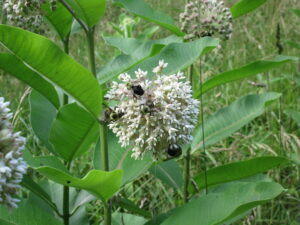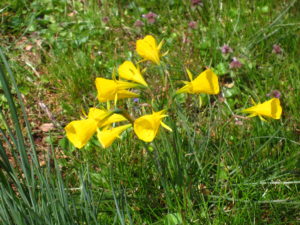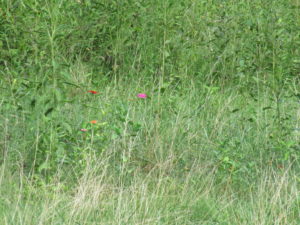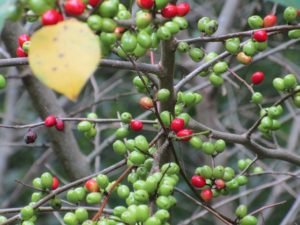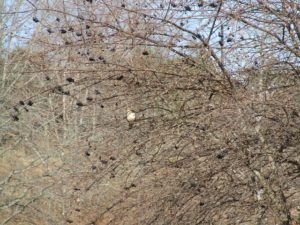The east meadow is in full milkweed glory.
We have a lovely patch of the native common milkweed (Asclepias syriaca) spreading up from the creek through the grasses and forbs that make up the meadow. In all my years, this is the best season yet. They have recovered from a disfiguring fungal or insect problem I never bothered to identify (because I wasn’t going to do anything about it) that afflicted them for the past few years and are now clean as the Garden of Eden. Whatever the cycle was, it has completed itself.
It’s heaven to walk among the fragrant drooping pods of blossoms. Earlier in the season, they were covered in orange fritillaries, now it’s bumblebees and other little fliers that swarm when we walk through the path along the creek. Yesterday when we walked in the twilight they rose in a gentle cloud around our heads before settling back down in our wake.
Drought has caught up with us. Days after days of beautiful sky-blue but no rain in sight and the ground is getting hard as iron. All the pots we’ve amassed up at the potting shed give it an Italian air, but it’s a lot of work to keep everything watered. It reminds me of my old days of estate gardening.
The single-flowered Geranium inquinans, one of Jefferson’s favorites, are in bloom in the turquoise pots. Hummingbirds go back and forth between their true scarlet flowers to the orange-pink native honeysuckle trumpets (Lonicera sempervirens) on the vine I’m training up on the potting shed lattice.
Goldfinches have been perching atop the new Monarda fistulosa ‘Claire Grace’, a cultivar with pretty pink-lavender flowers rather than the dark burgundy of the straight species. Saw a hummingbird moth visiting this morning. A front porch border full of flowers is a never-ending show in summer with Nicotiana ‘Fragrant Cloud’ feeding the pollinators through the night.


